Vault lines: we unwrap a few house secrets at Dior’s museum-worthy new Paris archive
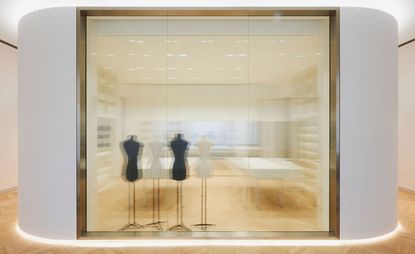
Back in 1987, three years after Bernard Arnault acquired the house of Christian Dior, a major exhibition, ‘Hommage à Christian Dior 1947-1957’, was staged at the Musée des Arts Décoratifs in Paris to mark its 40th birthday. During the preparations for the show – as sketches, production notebooks, photos, catalogues, press releases, and toiles were gathered together in one place for the first time, and as clients and friends of the house were contacted to lend garments – it became obvious that a more structured organisation of the archive was necessary.
What was once entrusted to one person is now a team effort. With the house approaching its 70th year, Dior Heritage, as the archive is now known, is looked after by a squad of 12, headed up by director Soizic Pfaff. The collection includes 252 garments by Christian Dior himself (who passed away in 1957) and, covering the decades since, 53 by his successor Yves Saint Laurent, 256 by Marc Bohan, 211 by Gianfranco Ferré, 1,753 by John Galliano, 504 by the studio and 1,130 by Raf Simons. As well as garments there are shoes, bags, jewellery and hats, documents and a digital archive that includes films, show videos and interviews.
Dior Heritage has just moved into swanky new digs, referred to rather fabulously as One Dior, in Avenue Montaigne, steps away from the couture house at number 31. One Dior is most definitely a working space; although you could mistake it for a museum, the public sadly won’t get to visit. Step inside, from a discreet entrance via a grand courtyard, over a threshold of Blue de Savoie marble, past the grey Vladimir Kagan ‘Serpentine’ sofa, and you’ll come across a curved plaster wall finished in the cannage pattern (inspired by a woven cane salon chair), a Dior house code first used as a print on a silk blouse in 1951. A window of incised glass offers a glimpse into a space where garments are received after restoration or prepared for loans to museums – such as the Hepworth Wakefield, currently showing a cocktail dress from the 1952 Profilée line as part of Jonathan Anderson’s ‘Disobedient Bodies’ exhibition. With its Corian-topped tables, oak parquet in a herringbone pattern echoing the salons of Dior HQ across the avenue and shelves neatly stacked with lidded containers, this room is white, bright and light.
The accessories area is slightly more theatrical; black steel shelving is lined with grey custom-made boxes filled with hats, shoes and jewellery. Conditions, as for the rest of the storage facility, are rigorously controlled. Conservation-friendly lighting does not exceed 50 lux, humidity is set between 45 and 50 per cent and temperature between 18 and 20°C. The boxes take OCD organising to another level. Each is labelled and numbered in 16-point Cochin LT type, in line with Dior Heritage’s brand identity. For each pair of shoes, a fully shaped box liner and shoe tree have been individually formed (in acid-free materials and chic Dior grey) so the shoes can be viewed without being touched, and kept perfectly in shape.
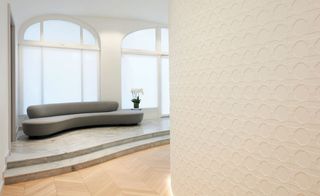
In the entrance, a ‘Serpentine’ sofa by Vladimir Kagan rests on Blue de Savoie marble. The herringbone pattern of the oak floor echoes that of Dior’s couture salon
Elsewhere, documents have been reconditioned and packaged for protection but also aesthetics. There are sketches, notebooks, look books, invitations, catalogues and records of fashion shows from as far back and far afield as Sydney in 1948. In the vault-like area reserved for garments, these are kept either flat (when delicate or heavily beaded, for example) or in sliding wardrobes, on specially made, padded hangers, in cotton bags that don’t touch the clothing.
Pfaff and her team add new garments on a collection by collection basis, and also acquire items at auction and through word of mouth. One Dior is just 900 sq m, so many more garments are kept off site in a secret location around three hours from Paris. Anything lent out to a museum must first return there for quarantine to ensure it’s free from any bugs.
As well as the house’s collection of 4,159 pieces, Dior has catalogued 7,214 couture models and 909 pairs of shoes in museums and private collections across the globe, from the Musée des Arts Décoratifs in Paris to The Kyoto Costume Institute. Dior Heritage’s mammoth task is not only cataloguing each piece but having Lazia Hamani photograph them, one by one. In most cases, only the museum’s staff are permitted to handle the garments, which must be shot in situ. The whole project is also being recorded in a series of books, published by Assouline. Dior by Christian Dior 1947-1957 is now out. Down the line, they will arrive at the era of current artistic director Maria Grazia Chiuri. The Dior archive is a resource not just for artistic directors and the studio team, but across the brand, from legal to loans, and for some very lucky students. The archive and the cataloguing of the museum’s collection underline the key objective here – to highlight Dior’s heritage with an inventory created, organised, preserved, controlled, packaged and presented in the best possible way. When a yet-to-be-announced exhibition is staged later this year to celebrate 70 years, Dior will be ready.
As originally featured in the May 2017 issue of Wallpaper* (W*218)

Rolls of white fabric are at the ready to protect garments from the elements. On the stand is a ‘Patchouli’ dress from the A/W52 Profilée line
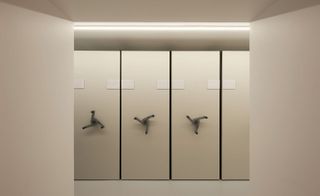
The vault-like storage area where couture dresses are hung inside specially constructed cotton bags
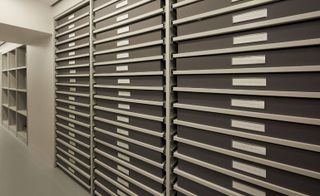
Flat storage is provided for delicate or heavily beaded garments, with labels in 16-point Cochin LT type
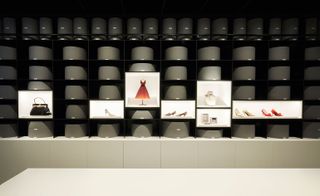
Hats, shoes and jewellery are stored in the accessories area in row upon row of custom-made and individually labelled grey boxes, lined up along black steel shelving
INFORMATION
For more information, visit the Dior website
Wallpaper* Newsletter
Receive our daily digest of inspiration, escapism and design stories from around the world direct to your inbox.
Also known as Picky Nicky, Nick Vinson has contributed to Wallpaper* Magazine for the past 21 years. He runs Vinson&Co, a London-based bureau specialising in creative direction and interiors for the luxury goods industry. As both an expert and fan of Made in Italy, he divides his time between London and Florence and has decades of experience in the industry as a critic, curator and editor.
-
 Audi launches AUDI, a China-only sub-brand, with a handsome new EV concept
Audi launches AUDI, a China-only sub-brand, with a handsome new EV conceptThe AUDI E previews a new range of China-specific electric vehicles from the German carmaker’s new local sub-brand
By Jonathan Bell Published
-
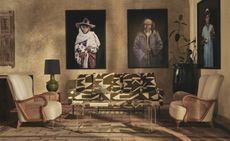 Inside Izza Marrakech: A new riad where art and bohemian luxury meet
Inside Izza Marrakech: A new riad where art and bohemian luxury meetHonouring the late Bill Willis’ hedonistic style, Izza Marrakech fuses traditional Moroccan craftsmanship with the best of contemporary art
By Ty Gaskins Published
-
 Clocking on: the bedside analogue timepieces that won’t alarm your aesthetic
Clocking on: the bedside analogue timepieces that won’t alarm your aestheticWe track down the only tick-tocks that matter, nine traditional alarm clocks that tell the time with minimum fuss and maximum visual impact
By Jonathan Bell Published